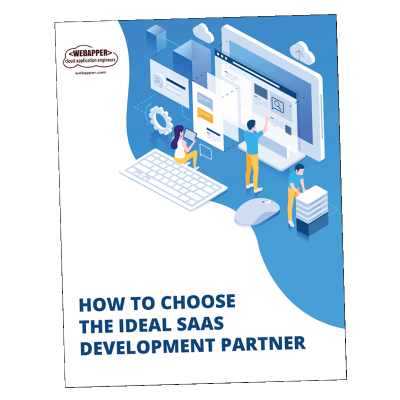Vertical SaaS Victory
How Niche Specialization is Beating Horizontal Giants in 2025
SaaS has fundamentally shifted the past year, especially with AI exploding. While horizontal giants burn through billions trying to be everything to everyone, vertical SaaS companies are quietly building software empires by being something specific to someone specific. David is absolutely demolishing Goliath in the SaaS world, and it’s happening faster than anyone predicted. In 2025, vertical SaaS specialization is becoming the dominant one. The companies that embrace niche focus are outperforming their horizontal competitors on every metric that matters.
The David vs. Goliath Challenge That’s Actually Winnable
Many SaaS leaders think they can’t compete with horizontal platforms, as the math seems impossible. They have more money, more developers, more marketing budget, and more brand recognition. How can your 12-person team possibly compete with their 12,000-person organization?
The generic solution trap is real.
Horizontal platforms optimize for the broadest possible market, which means they’re mediocre for everyone. They build features that work “well enough” for 80% of use cases while completely missing the nuanced workflows that define success in specific industries. This creates massive opportunity gaps that vertical SaaS companies can exploit.
Feature bloat is their weakness.
Those horizontal giants you’re intimidated by are drowning in technical debt and feature complexity. Every new capability they add makes their platform harder to use for specialized workflows. Meanwhile, you can build laser-focused solutions that solve real problems elegantly.
Decision paralysis helps you win.
When prospects evaluate horizontal platforms (e.g., Salesforce), they face overwhelming feature lists and complex pricing tiers. Your vertical SaaS solution offers clarity: it either solves their specific industry problem or it doesn’t. This binary decision-making process accelerates sales cycles dramatically.
The Three Game-Changing Benefits of Vertical SaaS Specialization
Premium pricing power
Vertical SaaS companies consistently command 2-3x higher pricing than horizontal alternatives because they deliver measurable ROI in industry-specific workflows. When your software directly impacts a medical practice’s patient scheduling or a construction company’s project margins, price becomes secondary to results.
Lightning-fast sales cycles
Industry-specific solutions practically sell themselves to qualified prospects. SaaS GTM research indicates vertical solutions shorten sales cycles average by 40% because buyers immediately understand the value proposition. No more months-long evaluations comparing dozens of features—your solution fits their industry workflow.
Defensible market position
Once you have a strong position in a vertical, horizontal competitors can’t easily displace you. Your deep industry knowledge, specialized integrations, and customer relationships create switching costs that protect your market share even when giants try to compete on price.
4 Practical Strategies for Vertical SaaS Domination
Start with the workflow, not the feature.
Instead of building another CRM, build the perfect patient management system for family pracyices. Map out industry-specific processes that horizontal tools handle poorly, then design your entire product experience around those workflows.
Become a visible industry expert.
Attend trade shows, sponsor industry publications, and create content that demonstrates your deep vertical knowledge. When prospects see you understand their specific challenges, they’ll choose you over feature-rich horizontal alternatives. Founder lead marketing has become extremely successful.
Integrate with industry-standard tools immediately.
Almost every industry has 3-5 must-have software tools that everyone uses. Build native integrations with these platforms before launch. An ecosystem strategy can cut your sales cycle in half by eliminating integration concerns.
Price based on business outcomes (not seat count).
Horizontal SaaS companies price by users because they don’t understand industry economics. Consider more applicable metrics.
The Webapper Approach to Vertical SaaS Success
We’ve seen this David vs. Goliath story play out many times. The most successful vertical SaaS companies share one common trait: they resist the temptation to expand horizontally until they completely dominate their initial vertical. Horizontal platforms optimize for breadth; vertical SaaS winners optimize for depth. Every feature you don’t build for adjacent markets makes you stronger in your chosen vertical.
Your Vertical SaaS Victory Starts Today
The window for vertical SaaS disruption has never been wider. Horizontal giants are distracted by AI initiatives and enterprise deals while underserved industries are begging for purpose-built solutions. This creates an unprecedented opportunity for focused SaaS companies to establish market dominance. The David vs. Goliath story you’re living isn’t about size—it’s about focus. Every day you spend trying to compete with horizontal platforms on their terms is a day you could be building unassailable dominance in your chosen vertical. The most successful SaaS companies of 2025 won’t be the ones with the most features or the biggest marketing budgets—they’ll be the ones that understood their customers’ industries better than anyone else.
Stop trying to compete with everyone and start dominating someone. Your vertical specialization journey begins with a single decision: choosing depth over breadth, expertise over expansion, and industry mastery over generic solutions.
Ready to identify your winning vertical and build a defensible SaaS position?
Contact Webapper today and let’s turn your niche expertise into market dominance.
Need SaaS Application Development Guidance?



Leave A Comment